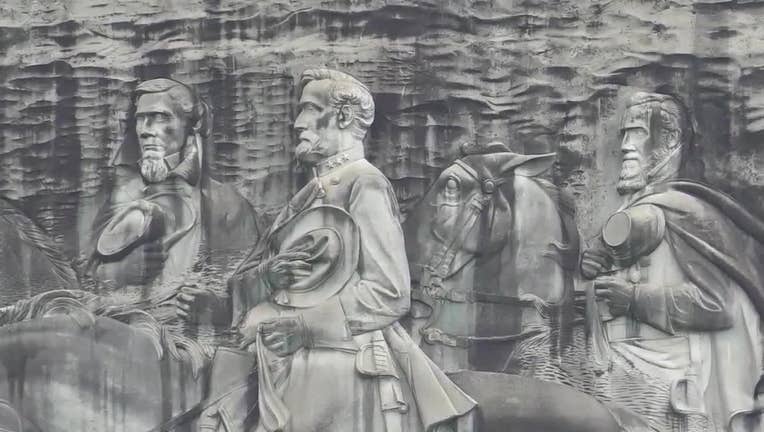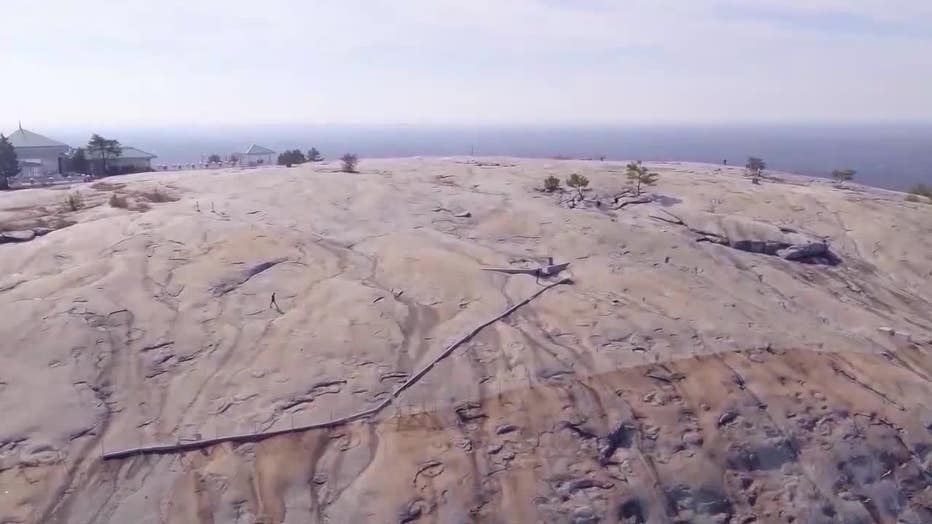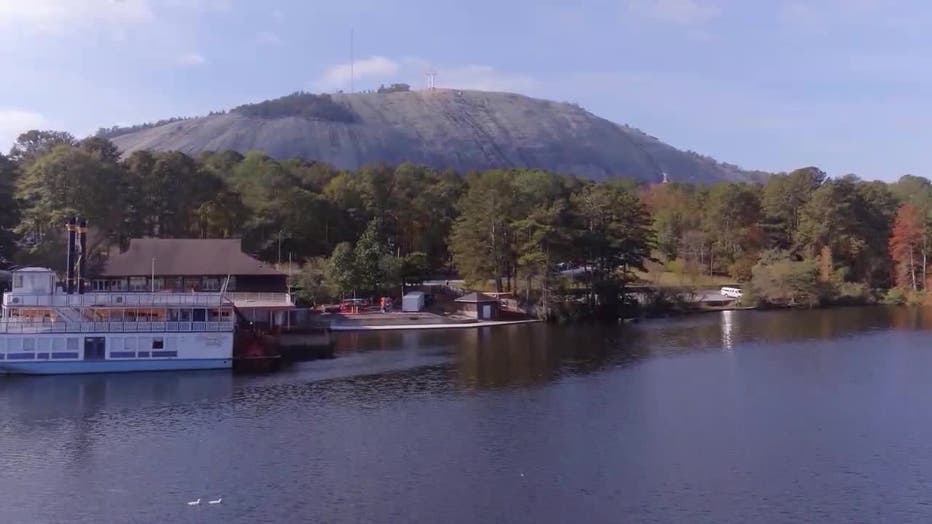Georgia lawmakers push to remove Confederate designation on Stone Mountain Park

STONE MOUNTAIN, Ga. - A group of state representatives in DeKalb County has proposed big changes to Stone Mountain Park.
Democratic State Rep. Billy Mitchell, whose district represents the park, Rep. Mary Margaret Oliver (D-Decatur), and Rep. Omari Crawford (D-Decatur) introduced a bill Monday that would remove the official designation of Stone Mountain Park as a Confederate Memorial.
House Bill 794, which is co-sponsored by all 16 members of the DeKalb County delegation, would also remove the word "Memorial" from the park's official title - changing the oversight body from the "Stone Mountain Memorial Association" to the "Stone Mountain Park Association."
"We have been waiting too long for action by the Stone Mountain Memorial Authority to act on needed changes to the false history of the park and the carving," Mitchell said in a statement. "We do not understand the delay and wish to set forth the changes that we see as necessary."
The bill would also remove the requirement for the association to stock and sell Confederate memorabilia and remove the requirement to preserve the carvings of Jefferson Davis, Robert E. Lee and Thomas "Stonewall" Jackson on the mountain.
"I am a native of Georgia and DeKalb County, and Stone Mountain has been a part of all the stages of my life," said Rep. Oliver. "The park is an important asset for our county and state and enjoys enormous popularity and use. As such, the park needs to change its statutory history of honoring the Confederacy and adherence to a ‘lost cause.’"

Critics have called on the association to remove the colossal sculpture from the mountain’s northern face. Completed in 1972, it measures 190 feet across and 90 feet tall. It is the largest Confederate monument ever crafted and has special protection in Georgia law.
When Georgia lawmakers voted in 2001 to change the state flag that had been dominated by the Confederate battle emblem since 1956, language to guarantee the preservation of the Stone Mountain sculpture was included as a bargaining chip.
The law states that "the memorial to the heroes of the Confederate States of America graven upon the face of Stone Mountain shall never be altered, removed, concealed, or obscured in any fashion."
Stone Mountain wasn’t a battle site and had little historical significance to the Civil War. But 50 years after the war ended, the exposed surface of the mountain’s northern face sparked an idea among the United Daughters of the Confederacy.
"It looked like a giant billboard," said Stan Deaton, senior historian for the Georgia Historical Society.

The group hired sculptor Gutzon Borglum — who later would carve Mount Rushmore — to design a massive Confederate monument in 1915.
That same year, the movie "The Birth of a Nation" glorified the Reconstruction-era Ku Klux Klan and Stone Mountain played a key role in its resurgence, marking its comeback with a cross burning atop the mountain on Thanksgiving night.
Budget problems plagued the Stone Mountain project and work on the sculpture languished until the state bought the mountain and surrounding land in 1958 for a public park. Finishing the monument gained renewed urgency as the civil rights movement brought unwanted change to defiant Southern states.
"It became the centerpiece of the park," Deaton said. "There was never any doubt that the state’s intention of finishing this was of a piece with massive resistance."
An estimated 10,000 people attended the monument’s dedication in 1970. Another two years passed before its official completion.
Five decades later, the park at Stone Mountain markets itself as a family theme park rather than a shrine to the "Lost Cause" mythology that romanticizes the Confederacy as chivalrous defenders of states’ rights. Its website highlights miniature golf and a dinosaur-themed attraction while downplaying the Confederate carving, Confederate flags and brick terraces dedicated to each Confederate state.
The Associated Press contributed to this report.

